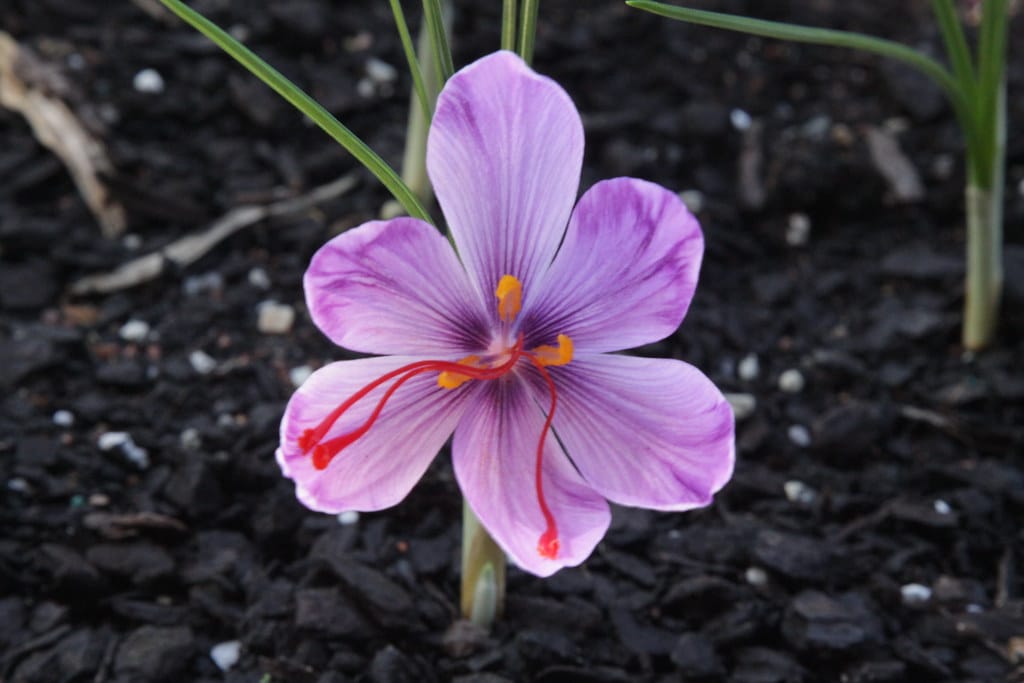Predict a 50% reduction in the global price of saffron
The conflict between the most important countries of Iran’s saffron export destination, namely Spain, Italy and China, with Corona, has practically stopped the export of Iranian saffron. The closure of export borders and the suspension of international flights, especially commercial flights following the outbreak of the corona in Iran, affected the export goods market and greatly reduced the demand for imports from Iran, but with the spread of the virus, especially the spread of the disease in Spain, which was the first export destination of Iranian saffron and the implementation of preventive health and safety policies in this country, practically stopped saffron exports.
The vice-president of the National Saffron Council of the country says in this regard: the entire export of the country’s saffron is done by air and at present there is no export by stopping flights. Gholamreza Miri continues by stating that there is no demand and demand for the purchase of saffron: since March 12 of last year, all custom shipments remained in the exporters’ warehouses and the customers were not willing to receive the load due to warehousing and clearance problems, which is why most companies Exports have been closed since March 16th.
From the beginning of March 2017, following the news of the expansion of the corona in Iran, the statistics of saffron exports began to decline. Although the export figure by the end of February 2017 had exceeded the statistics of the same period in 1397, domestic and foreign transactions decreased. This issue also led to a drop in the price of saffron. According to the Vice President of the National Saffron Council, by the end of February 2016, the export figure of saffron, 95% of which is supplied from Khorasan, was 224 tons and at the end of February 2017, this figure was 227 tons, but the corona outbreak stopped this growing trend and closed exports. The decrease in transactions has reduced the price of this product so that the price of 9 to 11 million Tomans per kilogram of saffron reached 8 to 10 million Tomans in the middle of this month before the beginning of March, but it did not stop at this point and its decreasing trend It continued, until, according to Miri, the last saffron transactions in the market were made with a figure between 6 to 9 million Tomans per kilogram.
Accumulation of saffron in warehouses
The world economy is in absolute stagnation, exports and imports in most countries of the world have stopped, more and more countries are involved in the corona and infected countries are in unpredictable conditions in terms of disease control, in which case it is not even possible to estimate the time to reopen Redefined world markets and resumed international trade relations. Deposition of export goods in warehouses not only reduces the quality, especially in agricultural goods, but also exposes the market to the peak of supply after the corona crisis, and further reduction in the value and price of goods is not far from expectation. All saffron suppliers have made their purchase in March, but have not been able to sell due to the conditions created, so when the market opens, they have saffron and will not buy. Also, according to the vice-president of the National Saffron Council, the Central Organization of Rural Cooperatives has purchased 70 tons of saffron, which is available in the warehouses of this organization. There are 15 tons of saffron in 5 stock exchanges; Farmers have not been able to sell all their produce during the four months since the last harvest season, and farmers still have a significant amount of saffron. Even exporters did not send large quantities of their orders. Miri, who is also the head of the Khorasan Saffron Exporters Union, warns of a sharp drop in the price of this product with the reopening of markets, saying that 85% of the country’s saffron is exported and market conditions are subject to supply and demand.
Policies should be such that supply management prevents prices from falling and farmers from being harmed.
He also praised the supportive purchase policy of saffron, adding: We still do not know how long this situation will continue; Saffron is considered a luxury commodity that in the current situation there is no desire to buy it, while the private sector, which is the main buyer of saffron, is currently closed and has no income, so the government and the Rural Cooperative Organization should prevent the activities of intermediaries by buying saffron from farmers. And prevent a drop in the price of this product. Now the brokers have gone to the farmers and, arguing that the continuation of the corona crisis will reduce the prices even more, have offered to buy their product at a price of 2 million Tomans below the price.
Miri believes that if the organization sells the products left in the warehouses to export units or packages with a certain profit, the whole product will be exported with normalization and the farmers will not be harmed. The Vice President of the Saffron Council has another suggestion for the government, and that is that if for any reason there is no ability or will to buy saffron left with saffron growers, the facilities provided to the Rural Cooperative Organization should be provided to export units so that they can buy the product. Shorten intermediaries.
Predict a 50% reduction in the global price of saffron
According to the statistics of the Ministry of Jihad for Agriculture, 500 tons of saffron were produced in Iran last year, of which 280 tons were exported. Due to the activities of various informal companies, there are no accurate statistics on domestic consumption, but estimates indicate that up to 20% of saffron produced in Iran is consumed domestically. A significant part of Iranian saffron is smuggled out of the country or smuggled to destination countries. Last year, 15 tonnes of saffron were legally exported to Afghanistan from official sources, while Afghanistan banned the import of saffron from Iran to support its domestic production. But the Covid-19 epidemic has even reduced saffron smuggling figures to zero, because in addition to tightening destination countries’ imports, the sharp drop in the economically viable price of smuggling has also eliminated them. Prior to the outbreak of the coronavirus, the global price of saffron in world markets had reached $ 1,100, but Ali Hosseini, a member of the National Saffron Council, predicted last week that after the corona, the price of saffron would likely return to the 1960s, at around $ 400. Up to $ 500 per kilogram.







Get Social